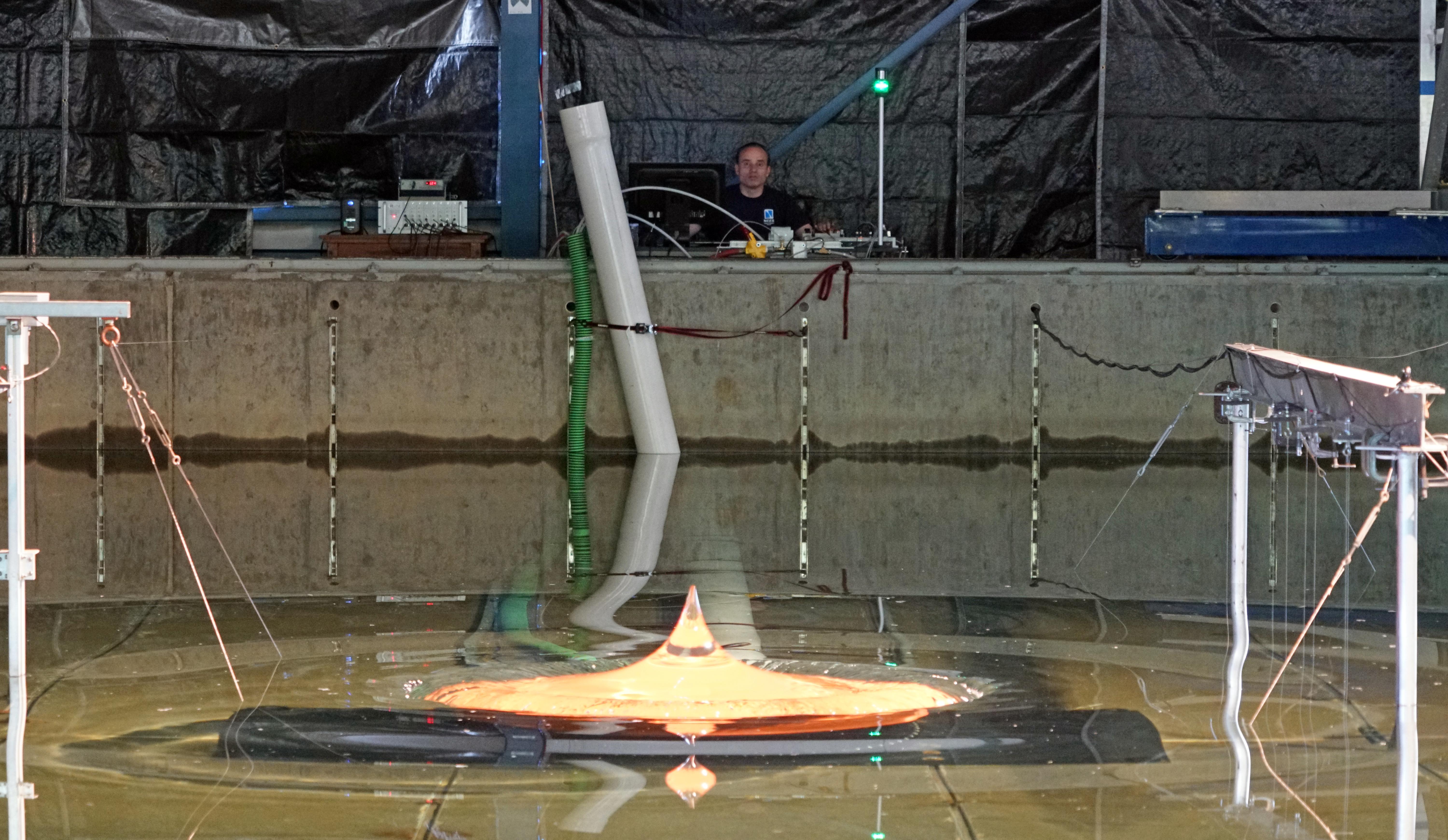Georgia Tech Making Waves in Tsunami Research

Hermann Fritz is at the controls of the volcanic tsunami generator, which simulates the effects of these natural disasters for further study.
Twenty years ago, when strangers would ask Hermann Fritz about his job and he told them he was a tsunami expert, he got plenty of quizzical looks in response.
“The 2004 Indian Ocean earthquake changed everything,” said Fritz, a young researcher whose Ph.D. was barely two years old at the time, recalling the powerful undersea megathrust off the Indonesian coast that caused the ocean floor to rise on Boxing Day. It triggered a massive, deadly tsunami with 100-foot waves that killed nearly 230,000 people in 14 countries, the last of them 5,000 miles from the earthquake epicenter.
“Overnight, everyone in the world knew about tsunamis,” said Fritz, now a professor in the School of Civil and Environmental Engineering at Georgia Tech. He worked post-disaster reconnaissance operations in countries devastated by that 2004 tsunami.
In the years since, he has led or participated in at least a dozen other such scientific missions, in the wake of tsunamis, hurricanes, landslides, and earthquakes. His wide-ranging research centers on fluid dynamics in these natural (and human-made) disasters, but also on their mitigation and coastal protection. That’s where his latest research, published in the journal Physics of Fluids, is aimed.
Fritz and his former graduate student, Yibin Liu, are interested in a specific kind of tsunami, those caused by underwater volcanic eruptions and landslides. So, they built a volcanic tsunami generator in a wave basin — essentially, a large lab-in-a-tank for studying wave behavior, the O.H. Hinsdale Wave Research Laboratory, a National Science Foundation-supported Natural Hazards Engineering Research Infrastructure facility at Oregon State University.
“The recent underwater volcanic eruptions of 2018 at Anak Krakatau and the 2022 Tonga event caused tsunami hazards with extensive casualties and economic impacts,” Liu said. “That’s what motivated this project — the limited scientific understanding and field data of tsunami generation mechanisms.”
Making Waves
The tsunami generation process is the transfer of mechanical and thermal energy from volcanic activities into the surrounding body of water. To mimic this behavior for their observation, the researchers built a pneumatic volcanic tsunami generator (VTG). Tsunami waves are generated by sending a vertical column of water up through the water surface. Then the water surface deformation was measured with cameras and wave gauges.
“This design, with multiple pneumatic cylinders, can reach a wide spectrum of motion patterns to simulate various types of underwater volcanic eruptions,” said Liu.
The VTG, which they installed on the basin floor at Oregon State, is essentially the next generation of technology they’d used in previous studies.
“We had studied tsunamis from non-tectonic sources, such as submarine landslides, for decades, and we had previously used pneumatics to drive gravel landslides and were familiar with the pneumatic controls and rapid accelerations,” Fritz said. “Ultimately it came down to developing a volcanic tsunami generator that would allow for safe, controlled, and reproducible experiments of an isolated volcanic tsunami generation mechanism.”
They conducted more than 300 experiments on the simulator, recreating different volcanic conditions. The 3D data they gathered will ideally lead to better tsunami models for future events, which can be very unpredictable. The Anak Krakatau event in 2018 is a great example.
“It had basically been announcing a potential tsunami hazard by erupting for six months before collapsing and triggering a tsunami that still took more than 400 lives,” Fritz said.
He added, “The beauty of physical modeling is that it allows us to safely study details of volcanic tsunami generation at reduced scale and fill gaps in rare, real-world observations of volcanic tsunamis. Ultimately, the broader impacts of this research are to raise tsunami awareness, educate, and contribute to saving lives.”
Video: Volcanic Tsunami Generator at work
Citation: Hermann Fritz and Yibin Liu, “Physical modeling of spikes during the volcanic tsunami generation,” Physics of Fluids. doi.org/10.1063/5.0147970